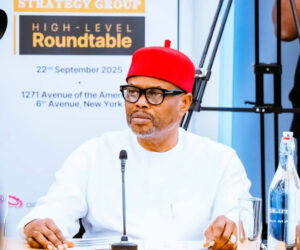
The problem with the one-state vision is that it ignores the myriad centripetal forces that have been at play in the region, and that have multiplied of late. The two-state option will struggle, even with the best of intentions on all sides — a fact that ought never to be taken for granted. Fragile, though this vision is, it remains the only possibility of hope in a region that has seen so many false dawns.
The death toll from Israel’s military response to the outrage perpetrated by Hamas on 7 October, 2023 is outrageous. The targeted killing, last week, by the Israeli Defence Forces, of six journalists (the Israeli military has so far failed to justify its claims that Anas al-Sharif, an Al Jazeera correspondent, “served as the head of a terrorist cell in Hamas”) makes urgent search for solutions to end this toll (Israel’s activities in the Gaza strip long since ceased to qualify as a war) even more so.
Anecdotal evidence off the streets of the Middle East’s main flashpoint is depressing still. From the Palestinian family in Gaza, whose children do their homework by candlelight during a blackout, to the Israeli mother in Sderot, checking the rocket-alert app before sending her kids to school, the near-term outlook for both Israel and its occupied territories have never been drabber.
A lot has changed about the relationships in the region. And it is not just in the readiness of the Israeli political establishment to countenance larger civilian casualties, relative to each military action. The unrestrained cynicism of the Binyamin Netanyahu government has been much commented on. Obviously, in the absence of the current war, an election could threaten his governing coalition’s stay in office. Without the cover of government, Mr Netanyahu’s prospects of being indicted in the slew of cases in which he is before the courts in his country (the International Criminal Court’s arrest warrant will need to be exercised, first) are high.
Has Israeli national sentiment drifted to the right on the military engagement in Gaza? Yes, if the presence of the Religious Zionism and Otzma Yehudit parties in the governing coalition is anything to go by. No, if the growing protests on Israel’s streets against the carnage in Gaza offer any explanation.
After three major wars (1948, 1967, and 1973), the occupation by Israel of the West Bank, Gaza, and East Jerusalem; the reconfiguration of the region’s territory; and successive waves of persons displaced by the fighting, what Palestinians still describe as “Nakba” (“the catastrophe”), Israelis call the “Formation of Israel.”
The insouciance of the larger global community to the crisis has undoubtedly grown. One could argue that the promise by France, the United Kingdom, Canada, and Australia (amongst others) to formally recognise the State of Palestine during the United Nations General Assembly meeting in September has come in too late to comfort the many who have died unnecessarily from the fighting. Nonetheless, what to make of Ghazi Hamad’s (a senior member of Hamas’s political bureau) claim in an Al Jazeera interview that, “The initiative by several countries to recognise a Palestinian state is one of the fruits of October 7. We proved that victory over Israel is not impossible, and our weapons are a symbol of Palestinian dignity”?
There is no question but that in planning the October 2023 attack on Israel, Hamas hoped to invite Israeli reprisals. Assured that the resulting deaths of its people would provide both the fulcrum and lever with which it would prise world opinion away from Israel and towards the Palestinian cause. If Hamas’ long-term goal were to undermine Israel’s global standing, the immediate route to this objective was for a disproportionate Israeli response (as has, thus far, been the case) to erode the Jewish state’s moral authority. Israel, on a military high from its recent success in Lebanon (where it had all but eliminated Hezbollah’s leadership and the threat posed by the Party of God to the Jewish state), more than obliged. Thus described, not much has changed about the conflict between Israel and the Palestinians. The historical claims are no less rivalrous and bloodthirsty. Religious, cultural, and national identities continue to shape the narratives on both sides.
After three major wars (1948, 1967, and 1973), the occupation by Israel of the West Bank, Gaza, and East Jerusalem; the reconfiguration of the region’s territory; and successive waves of persons displaced by the fighting, what Palestinians still describe as “Nakba” (“the catastrophe”), Israelis call the “Formation of Israel.” Arguably, whereas these different perspectives on the same events used to be between the Israeli and Palestinian (Arab) views, today the split is more granular — between the right and left in Israel, between Fatah and Hamas in Palestine, and between Arab signatories to the Abraham Accords on one hand, and what remains of the Middle East, on the other.
Across the region, the need is for both an increase in popular representation and for the delegation of responsibility and authority to act in the popular interest to levels of organisation closest to the people and best able to address such tasks. However, new lines of fissure will make these goals difficult.
Of course, regional geopolitics continues to shape and reshape the conflict. As does the global one. Religion does not help, as one would have expected, given Jerusalem’s significance to Jews, Muslims, and Christians. Still, negotiations supported by outsiders will be helpful. But local grassroots efforts in support of coexistence will matter just as much.
Across the region, the need is for both an increase in popular representation and for the delegation of responsibility and authority to act in the popular interest to levels of organisation closest to the people and best able to address such tasks. However, new lines of fissure will make these goals difficult. On the Palestinian side, the tension between Hamas and Fatah will matter, just as much as the new one between Hamas and Gaza’s populace. Israel’s right-wing/left-wing split will be compounded in the coming years by the difficulty of the country remaining both Jewish and democratic.
The problem with the one-state vision is that it ignores the myriad centripetal forces that have been at play in the region, and that have multiplied of late. The two-state option will struggle, even with the best of intentions on all sides — a fact that ought never to be taken for granted. Fragile, though this vision is, it remains the only possibility of hope in a region that has seen so many false dawns.
Uddin Ifeanyi, journalist manqué and retired civil servant, can be reached @IfeanyiUddin.









